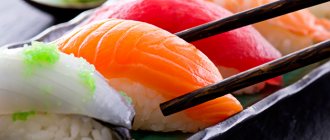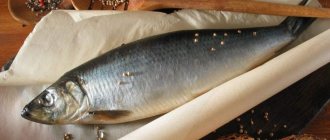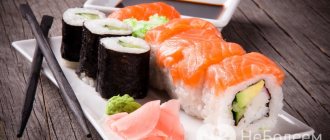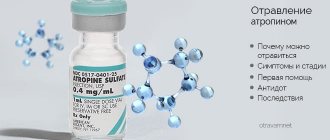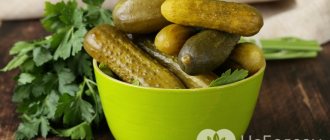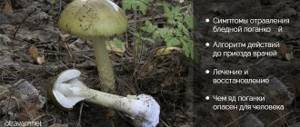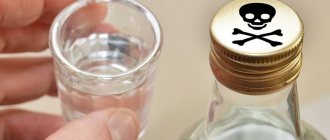Before the holidays, food is bought in a hurry, they are prepared for future use, and sometimes stored outside the refrigerator, because they simply forgot to put them there - it’s a holiday... And in the end it just becomes a pity to throw away treats that are not the freshest, because so much work has been put into them money…
But you have to pay seriously for such “frugality”: after eating stale delicacies, nausea, diarrhea, vomiting, pain in the intestines and stomach appear - real food poisoning.
Types of food poisoning
Diseases are caused by microbes and their toxins - protein poisons found in foods. Their pathogens get into food products when sanitary and hygienic rules for preparing and storing food are violated, or when contaminated water is used. When contaminated food is stored at room temperature, bacteria and toxins actively multiply.
Often, products contaminated with microbes are no different from benign ones in appearance, taste, or smell.
Among meat products, the greatest danger is represented by minced meat products, which have a large surface area for microbial growth.
You also need to be careful when handling chicken cutlets, since salmonella often live on the poultry skin, which can get into the meat when cutting.
Poisoning caused by staphylococcal toxins, which actively multiply at normal room temperature on products such as pates, smoked meats, cream cakes, vinaigrettes, dairy products and others, is also widespread. These products can be contaminated by patients suffering from staphylococcal pustular diseases who, through negligence, allowed to prepare or sell such food.
Dysentery, salmonellosis, paratyphoid and typhoid fever, streptococcal and staphylococcal food infections, and even cholera can be transmitted through food.
The consequence of food poisoning is often dysbacteriosis and chronic intestinal infections.
Typically, cramping pain, rumbling and bloating in the abdomen occurs 1-2 hours after microbes and their toxins enter the stomach. Diarrhea and vomiting may occur (but are not necessary). The most common symptoms include headache, chills, muscle aches and fever.
The most serious food poisoning is botulism.
Poisoning occurs several hours or days after contaminated products. Botulinum bacillus spores multiply only in an oxygen-free environment - in the deep layers of meat products, in canned food and in the intestines. To kill these bacteria, boiling is not enough; heating at temperatures above 120 degrees is necessary. The venom usually affects the nervous system.
In case of botulism poisoning, after the usual onset (abdominal pain and vomiting), after a few hours, vision becomes weakened, a grid appears before the eyes, and fog appears. Speech and swallowing are impaired. Then paralysis of other muscles develops. All this can lead to death within the first five days.
At the slightest suspicion of botulism infection, immediately call an ambulance to send him to the infectious diseases department. There they will introduce a special anti-botulinum serum, without which the chances of salvation become lower and lower with each passing hour.
Disease Prevention
Every person should know the basic rules of food hygiene. The causes of foodborne infections are most often associated with the quality of food that comes to the human table every day. The gastrointestinal tract is sensitive to many types of bacteria, but if meat, milk and other food are improperly processed or stored, the number of microbes in it increases sharply. If a contaminated product is eaten by a person, an infectious process occurs.
To never find out what foodborne infections are, you should adhere to the following recommendations:
- observe personal hygiene rules daily;
- keep dishes and all items in the kitchen clean;
- choose only fresh products, without foreign odors and without color changes;
- properly handle foods before consumption.
Infectious diseases will not become a widespread phenomenon if sanitary standards in production are met in accordance with established rules. It is necessary to strictly observe hygiene by employees of food processing enterprises, veterinary control over the cutting of meat, the rules of keeping and slaughtering livestock. Hygienic rules have been developed and applied for the treatment of premises, and regular medical monitoring of employees is observed. It is important to monitor the temperature and transportation conditions of meat and other products to avoid such dangerous diseases.
Foodborne infections cause many diseases, lead to complications and often threaten human life. To protect yourself from dangerous microbes, you should monitor the quality of your food and follow the principles of a healthy diet. Various infections and food poisoning occur for a reason, therefore their prevention is necessary. Following the established rules will preserve your health and protect you from the serious consequences of illness, especially in childhood.
First aid for food poisoning
If you suspect botulism, before the ambulance arrives, you need to do a gastric lavage with a weak soda or potassium permanganate solution, drink activated charcoal and plenty of hot drinks (milk, tea).
In case of ordinary food poisoning, you should also rinse the stomach until clean water appears with a pink solution of potassium permanganate using artificial vomiting - drink 1.5-2 liters of potassium permanganate, followed by irritation of the root of the tongue. Take a laxative (30 ml of castor oil), or give a saline laxative (30 g of magnesium or sodium sulfate in 400 ml of water), as well as plenty of alkaline drink for diarrhea to compensate for dehydration, activated charcoal.
After gastric lavage, you can apply a heating pad to your feet and drink hot tea. In case of food poisoning, taking sulfonamides (phthalazol, sulgin and others) or antibiotics (levomycytin and others) is indicated.
Cross contamination
Tatiana Ressina:
What are the dangers of expired products? Improper handling of food during preparation can lead to bacterial contamination of the food. This can happen like this:
- when raw foods come into contact with cooked/ready-to-eat foods;
- when blood or juices from raw foods come into contact with other foods. The following rules must be followed to avoid food contamination by bacteria:
- Before contacting cooked/ready-to-eat foods, immediately after contact with raw foods, wash your hands thoroughly;
- Kitchen equipment (knives, utensils, cutting boards) that have been used for raw foods must be thoroughly washed before use for cooked/ready-to-eat foods;
- You cannot put cooked/ready-to-eat foods where raw foods were previously; surfaces must be thoroughly washed and disinfected;
- Do not use one kitchen towel for different work surfaces or use dirty towels.
Folk remedies for the treatment of food poisoning
- Take activated carbon every 15 minutes for an hour, 3-5 grams. Instead of coal, you can use specially processed clay sold in powder as an absorbent.
- Take 1-2 grams of vitamin C every hour for 3 hours.
- Drink dill decoction with honey. Dill is suitable in any form (fresh, dry, stems or ground seeds). One tablespoon of fresh dill, or 1 teaspoon of dry herb, or 0.5 teaspoon of ground seeds - pour a glass of boiled water, boil for 20 minutes over low heat, cool for about fifteen minutes and add more boiled water to the original volume. Then add 1 tablespoon of honey. Drink the decoction half an hour before meals, half a glass a day.
- Marshmallow roots are an excellent remedy for food poisoning. Take one teaspoon of finely chopped roots and pour half a glass of boiled water, cover and leave for half an hour. After which it is filtered and honey is added to taste. Drink 1 tablespoon for adults, and 1 teaspoon for children, four times a day.
- Tea made from marshmallow flowers and leaves also helps with food poisoning. It is prepared like this: 2 tablespoons of the mixture are poured into two glasses of boiling water and left for 4 to 8 hours, then it is filtered and honey is added to taste. Take half a glass of tea 3-4 times a day 30 minutes before meals.
- A good remedy is ginger tea. Pour one teaspoon of ground ginger into a glass of boiling water, leave for 20 minutes, and take one tablespoon every half hour.
- Pharmacy tinctures of eleutherococcus, astragalus and sea microalgae in powder or tablets also help expel toxins from the body.
- You should drink as much fluid as possible if you have food poisoning. This can be water with lemon juice, black or green tea, tea made from rowan and (or) rose hips. It is highly advisable to refrain from eating during the day. You can limit yourself to decoctions of flaxseed or rice.
- In case of food poisoning, it is recommended not to lie down, but to walk, and the more, the better. This is explained by the fact that in addition to two kidneys, a person has a third, which is the skin. With intense or simple walking, the body releases toxins along with sweat, thereby cleansing itself.
- Rubbing the body with a woolen rag and showering are also useful to wash off the toxic products released from the skin. A bath or sauna is wonderful in such cases, as it perfectly expels toxins.
Very often, food poisoning, even without the use of medications, goes away within a few days.
Keeping food cold
- Cold foods must be kept cold in a refrigerator (below 5°C). This temperature is outside the dangerous temperature zone, which will inhibit the development of bacteria.
- Products can only be frozen once - when defrosted, the bacteria contained in the product may begin to multiply. If such a product is re-frozen, the number of bacteria contained in it may exceed the permissible level.
- Products should be defrosted completely - the part that is not completely defrosted will not be subjected to the necessary heat treatment, which means that not all bacteria will be destroyed.
- Containers with leftover food must be labeled, and all leftovers must be thrown away after two days from the day the food was prepared. Salads and sandwich fillings can be stored for two days, covered, in the refrigerator.
- The remaining ingredients must be used first. Never mix leftover and fresh salads or sandwich fillings.
- Before closing and storing cooked foods in the refrigerator, they must be quickly cooled to room temperature (until the steam stops coming from them). For faster freezing, it is recommended to cut food into small portions and place it in a shallow container.
But you should definitely seek medical help if:
- pain in the stomach and intestines is accompanied by headache or dizziness, rare pulse or difficulty breathing;
- symptoms of food poisoning have lasted for a week and do not go away;
- body temperature is above 37.5 degrees;
- Severe vomiting and diarrhea persist for 1-2 days, and the use of home remedies described above does not help;
- the sick person is a child or an elderly person.
In all of the above cases, you must call a doctor who will prescribe treatment.
How can I prevent the development of pathogenic bacteria?
- Do not allow raw foods to come into contact with cooked/ready-to-eat foods.
- Raw and cooked/ready-to-eat foods must be stored separately.
- If you don't have this option, remember that raw foods should always be placed below cooked/ready-to-eat foods in the refrigerator.
- Store food in sealed food containers or cover it with plastic wrap.
- Wash your hands before handling cooked/ready-to-eat foods immediately after handling raw foods.
- Use a variety of work surfaces, utensils and equipment to handle raw and cooked/ready-to-eat foods. If you are unable to do so, always thoroughly clean and disinfect work surfaces and equipment.
Prevention of food poisoning:
- Always wash your hands before preparing food. Wash dishes with hot soapy water after cooking fish or meat in them.
- Do not defrost meat at room temperature. Do this gradually in the refrigerator and cook immediately. You can defrost quickly in the microwave.
- Avoid raw meat, fish, eggs and raw pickled foods. Prepare such products carefully.
- Do not eat food that looks spoiled or smells bad, or food from bulging jars.
- Never eat dairy products or cooked meats that have been out of the refrigerator for more than two hours.
Source: www.inflora.ru
Where are pathogenic bacteria found and how do they get into food?
Bacteria can be found everywhere - in soil, water, human and animal bodies, as well as in food. Raw foods, especially raw meat, poultry and fish, can contain dangerous pathogenic bacteria. Bacteria found in raw meat can be transferred to other cooked/ready-to-eat foods during cooking or storage. This process is called cross-contamination. The human body contains many bacteria - they are on his hands, face, and stomach. Food service workers can contaminate food with bacteria if they touch their face or hair while preparing food or do not wash their hands after using the toilet. Not only catering workers, but also visitors themselves can contaminate food by sneezing, coughing or touching food displayed on display. Pets , insects, birds and rodents carry bacteria and can contaminate the food we eat. If you do not keep your work area clean, bacteria that grow on dirty tables and equipment, as well as in leftover food, can get into your food during the cooking process.
First aid and treatment
In most cases, when the symptoms of poisoning are minor, many decide that they do not need a doctor and prefer to treat themselves. Sometimes this is enough for recovery, but there are situations when symptoms that are minor in the first hours grow and threaten a person’s health.
To treat poisoning at home, you need instructions that must be strictly followed so that recovery occurs as quickly as possible and the negative consequences do not cause irreparable harm to health.
Follow a simple algorithm
For treatment it is recommended to use:
Gastric lavage
– it is carried out using water or a weak solution of potassium permanganate. You should drink at least 4 glasses of water and then induce vomiting. Repeat manipulations until the contents of the stomach are clear.
Take a laxative or do a cleansing enema
(use of a high siphon enema, water content of at least 10 l).
Replenish fluid and mineral levels,
which were lost due to vomiting and diarrhea. Replenish the fluid level through the mouth (using rehydron or gluxolan) or intravenously (using Trisol or Chlosol). Oral solutions should not be used in cases of diabetes mellitus, persistent vomiting, infectious-toxic shock, or severe dehydration.
Next, it is recommended to take a remedy for food poisoning
, i.e. enterosorbents (these drugs bind toxins and speed up the healing process). White charcoal, polysorb or enterosgel are suitable for these purposes.
If you suffer from severe abdominal pain, you can drink no-shpa
, it is aimed at relieving spasms and eliminating pain.
Other treatment is aimed at protecting the mucous membranes, restoring microflora and supplying the digestive system with additional enzymes
. The price of such drugs depends on the manufacturer and the availability of analogues, and may also fluctuate depending on the region of residence.
It should be noted that in case of poisoning caused by Shigella, antibacterial therapy is mandatory. In case of salmonella infection, a salmonella bacteriophage is used, and they are allowed into the team only after complete recovery.
A large amount of fluid is a necessary condition for recovery
Laboratory diagnostics
The purpose of its implementation is to identify the causative agent of the disease, for which the patient’s vomit and feces are examined, as well as possible food residues that could cause the disease.
Treatment of food poisoning
1. Symptomatic therapy
- drinking large amounts of fluid in the form of water at room temperature, saline solutions for oral use in order to replenish fluid losses and normalize electrolyte metabolism;
- intravenous fluid infusions if it is impossible to drink fluids naturally;
2. Etiotropic therapy consists of prescribing antibiotic therapy after identifying the pathogen and studying its sensitivity.
The following categories of patients require close attention and an immediate visit to a doctor: pensioners, children, people suffering from congenital or acquired disorders of the immune system, patients with no positive dynamics of the disease for a week or more.
Microbes
Microbes are tiny, mostly single-celled living creatures that come in a variety of shapes. They are indistinguishable to the naked eye, and some of them (viruses) cannot even be seen under a microscope. Some microbes are immobile, others move with the help of cilia or flagella.
Microbes are widespread in nature. Many of them are found in the air, soil, water, from where they get onto objects, clothing, hands, and food. Microbes multiply very quickly. A favorable environment for their development is liquid (water, broth, milk) or foods with high humidity. In addition to moisture, the proliferation of microorganisms requires temperature (25-35°) and the presence of a nutrient medium. They feed on proteins, fats, carbohydrates, minerals, and vitamins. Most microbes cannot exist without air, but there are also those that die from the action of oxygen (anaerobic microbes).
All microorganisms are divided into several groups: bacteria, yeast and mold fungi and ultramicrobes (viruses and bacteriophages).
Some microbes are beneficial. They play a significant role in plant life and are widely used in the food industry and other sectors of the national economy, medicine, and pharmacology. Thus, yeast is needed in bakery production, participates in fermentation processes in the production of wine, beer, kvass, and serves as the basis for the production of artificial protein. Lactic acid bacteria are used in the production of yogurt and other lactic acid products, in sauerkraut, pickling cucumbers, etc.
However, there are also harmful, pathogenic microbes that, penetrating into the body of a person or animal, produce toxic substances - toxins that cause certain diseases. Many microbes are causative agents of infectious diseases. Some of them cause food spoilage - rotting, molding, souring, rancidity.
To prevent food spoilage, they use various methods to destroy microorganisms or create conditions unfavorable for their life. The most effective way to kill germs is to use high temperatures. Most microbes, if they are in a liquid, die within 20-30 minutes when heated to 60-70°.
However, some microbes have the ability, under certain conditions, to form spores that die only at temperatures above 100°.
Some products (milk, caviar) are pasteurized, that is, heated at a temperature of 63-65° for half an hour or at a temperature of 75-90° for 5-10 minutes. During pasteurization, most bacteria, yeasts and molds die, but their spores remain. When storing food, it can sprout and cause spoilage. Complete destruction of microbes and spores is achieved by sterilization, that is, heating products in special apparatus at temperatures above 100°. This is how canned food is made.
Low temperature does not kill microbes, but delays their development. Therefore, to prevent spoilage, food is stored in the cold, and if long-term storage is necessary, it is frozen.
Salt or its strong solution, as well as concentrated sugar syrup, stops the development of microorganisms. This is used when preparing food for future use, when salting, preparing preserves, jam, and candied fruits. Putrefactive microflora is destroyed by lactic, citric and acetic acids used in fermentation and pickling.
A common method of preserving food is drying, which retards the development of microorganisms. Sun drying is especially effective, since most microbes cannot tolerate direct sunlight. Along with drying, products are smoked, during which they are not only dried, but also exposed to aseptic substances contained in the smoke.
Among modern methods of destroying harmful microorganisms, a prominent place belongs to bactericidal ultraviolet radiation. Products are irradiated with special bactericidal lamps, thereby disinfecting even heavily contaminated surfaces of meat, sausage and other products. Ultraviolet rays are used to improve air health and destroy germs on work tables, clothing, dishes and equipment.
To destroy microorganisms in rooms, workplaces, dishes, containers, disinfectants are used. Such a disinfectant is a bleach solution. First, prepare a 10% working solution of bleach (10 kg of powder per 10 liters of cold water), leave it in an enamel bucket with a lid or dark sealed bottles for a day, remove the foam from above, and then filter. This solution can be used for no more than five days.
To disinfect hands, utensils, utensils and equipment, use a 0.2% solution of bleach, which is prepared from a 10% solution (200 g of solution per 10 liters of water). It can be used throughout the day.
Who is at risk
Food poisoning can happen to anyone, and statistics show that almost every person has experienced this condition at least once in their entire life.
However, some populations are at greater risk than others. Anyone with a suppressed immune system or an autoimmune disease is at increased risk of developing food poisoning and related complications.
Experts say pregnant women are more at risk as their bodies cope with changes in metabolism and cardiovascular system (see Food poisoning during pregnancy - questions and answers). The risk of poisoning is also increased in older people because their immune system is no longer able to quickly respond to invasion by pathogenic microorganisms. Food poisoning in children is also much more common than in adults, since their immune system is not yet sufficiently developed (see Food poisoning in a child).
